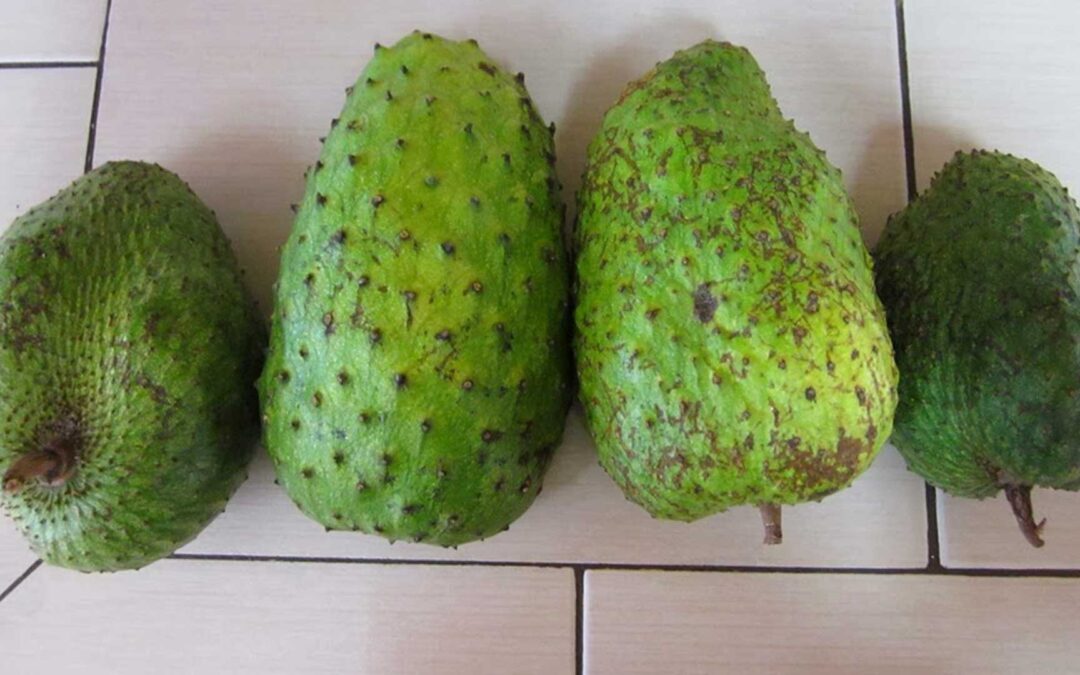
If you said “corossol”, you’re right! This fruit can grow quite large, typically weighing a few pounds, and is characterized by its green color and prickly skin. Inside you’ll find a delectable white pulp with big black seeds similar to watermelon seeds.
You can eat the pulp itself, though after a few bites, it becomes almost like indissolvable chewing gum and most people spit it out. In Haiti, it’s more commonly made into juice… a juice I refer to as “sweet nectar from Heaven”. One corrosol can produce a significant amount of thick juice that is then combined with sugar, evaporated milk, and sometimes vanilla or almond extract.
To make the juice, Haitians generally use a sturdy cup to mash the pulp juice through a sieve. If available, a blender may be used to chop and smooth the thicker pieces.


A refreshing treat to beat the heat. Many people in Haiti freeze corossol juice to make ice cream. Haiti’s famous Pat n To’s ice cream offers corossol as one of their flavors as does Bongu’s canned shakes.
A wealth of health benefits. Corossol has been reported to offer a number of benefits including high amounts of B and C vitamins, relieving liver ailments and skin irritations, protecting against UTIs, and some even suggest it can prevent cancer. (Other uses include treating bedbugs and head lice with its leaves and using the pulp as fish bait.)
A hot commodity. It’s not always easy to find corossol in the market. You’ll need to rise early and have your 100 goudes* ready. One reason is that many Haitians know the benefits of this delicious and nutritious fruit. The second reason is that if you find a corossol tree, you typically only see a small amount of fruit hanging. The sources I found note shy-bearing of only 12-24 fruits produced per tree. *A decent sized corossol will typically sell for 50-100 goudes, $1.25-2.50.

So the next time you’re in Haiti, keep your eye out for this impressive fruit. And don’t forget to swing by the guesthouse so we can whip you up a fresh glass!

